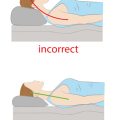Introduction: Mens Body Contouring in Contemporary UK
In recent years, the United Kingdom has witnessed a notable surge in interest surrounding body contouring procedures among men. Traditionally perceived as a domain predominantly reserved for women, cosmetic enhancements are now increasingly embraced by British men seeking to refine their physiques and boost self-confidence. Body contouring refers to a range of surgical and non-surgical procedures aimed at reshaping specific areas of the body, such as the abdomen, chest, arms, and flanks, to achieve a more defined and proportionate appearance. This evolving trend reflects broader societal shifts in attitudes towards male grooming and aesthetic self-improvement. As mainstream media and social platforms continue to spotlight the importance of personal image, modern British men are feeling more empowered to explore cosmetic interventions that were once considered taboo. Within this context, understanding the motivations behind mens growing acceptance of body contouring—and the cultural factors influencing these choices—provides valuable insight into the changing landscape of masculinity and beauty standards in contemporary UK society.
2. Trends and Popular Procedures
In recent years, the UK has witnessed a notable surge in demand for men’s body contouring procedures, reflecting evolving attitudes towards male aesthetics and self-care. British men are increasingly embracing cosmetic enhancements, with a growing emphasis on achieving a leaner, more athletic physique while maintaining subtlety and natural-looking results. Below, we explore the most popular treatments and highlight the technological advancements shaping this trend.
Key Body Contouring Procedures Among British Men
| Procedure | Description | Popularity |
|---|---|---|
| Liposuction (including VASER Liposuction) | Minimally invasive fat removal targeting stubborn areas such as the abdomen, flanks, and chest. VASER uses ultrasound technology for precision and reduced downtime. | Highly sought-after for its effectiveness and swift recovery period. |
| Gynecomastia Surgery | Surgical correction of enlarged male breast tissue to achieve a flatter, more masculine chest profile. | Increasingly common, particularly among younger men seeking confidence in their appearance. |
| Abdominal Etching | A specialised form of liposculpture that enhances abdominal muscle definition for a “six-pack” effect. | Gaining traction with fitness-conscious individuals. |
| Cryolipolysis (Fat Freezing) | Non-surgical technique using controlled cooling to eliminate fat cells in targeted areas like the waist or back. | Popular due to being non-invasive and requiring no anaesthesia. |
| High-Intensity Focused Ultrasound (HIFU) | Uses ultrasound energy to tighten skin and reduce minor fat deposits without surgery. | An emerging choice for those desiring subtle skin tightening along with contouring. |
The Role of Technological Advancements
The landscape of men’s body contouring in the UK has evolved rapidly thanks to technological innovation. Modern devices offer greater precision, safety, and customisation than ever before. For instance, advanced liposuction techniques like VASER allow surgeons to sculpt specific muscle groups with minimal scarring. Meanwhile, non-surgical options such as cryolipolysis and HIFU appeal to busy professionals who prefer little to no downtime. These advancements not only enhance procedural outcomes but also expand accessibility, encouraging more British men to consider body contouring as part of their personal wellness journey.

3. Changing Perceptions and Societal Acceptance
The UK has witnessed a remarkable transformation in attitudes towards men’s body contouring and cosmetic procedures. Traditionally, aesthetic enhancements were viewed as a female domain, with many British men hesitant to openly discuss or pursue such treatments due to prevailing cultural norms around masculinity. However, this landscape is rapidly evolving, fuelled by the influence of UK media, celebrity endorsements, and a broader redefinition of what it means to be masculine today.
The Role of UK Media
British media outlets, from mainstream newspapers to popular reality TV shows, have played a pivotal role in normalising male cosmetic interventions. Programmes like “Love Island” and discussions in lifestyle publications frequently showcase male contestants and public figures who are candid about their use of aesthetic treatments. This visibility has helped destigmatise procedures such as liposuction, abdominal etching, and non-surgical body sculpting among British men of all ages.
Celebrity Influence and Public Figures
High-profile British personalities—ranging from footballers to television presenters—have increasingly spoken out about their experiences with body contouring treatments. Their openness not only challenges long-held stereotypes but also encourages everyday men to consider similar options without fear of judgement. Celebrity culture in the UK now often celebrates self-improvement and personal confidence, further validating men’s interest in these procedures.
Redefining Masculine Ideals
The definition of masculinity in the UK is undergoing a profound shift. Traditional ideals centred on stoicism and physical ruggedness are giving way to new values that embrace self-care, wellness, and body positivity. Men are now more likely to view cosmetic treatments as an extension of a healthy lifestyle rather than a sign of vanity. This change reflects broader societal acceptance and a move towards inclusivity in conversations about body image and mental health.
Cultural Shifts Driving Acceptance
This evolving perspective is underpinned by generational changes, with younger British men particularly open to discussing appearance-related concerns and seeking professional help. The dialogue around male grooming has expanded significantly, breaking down taboos and fostering an environment where body contouring is regarded as both acceptable and aspirational. As these cultural shifts continue, it is clear that men’s body contouring will remain an integral part of the UK’s aesthetic landscape.
4. Cultural Nuances and British Identity
Men’s body contouring in the UK is influenced by a unique blend of cultural factors deeply rooted in British society. These influences extend far beyond the simple pursuit of aesthetics, intertwining with issues such as class distinction, regional identity, and longstanding traditional attitudes towards masculinity and self-care.
Class and Social Stratification
The UK has a well-documented history of social stratification, and this continues to impact access to, and perceptions of, cosmetic procedures. For some men from higher socio-economic backgrounds, body contouring may be seen as an acceptable investment in personal image or even a status symbol. In contrast, for working-class men, there may be greater stigma attached to engaging in what might be perceived as vain or non-essential self-improvement practices.
| Class | Attitude Towards Body Contouring | Accessibility |
|---|---|---|
| Upper Class | Status-driven, positive acceptance | High (private clinics, London-centric) |
| Middle Class | Pragmatic, growing acceptance | Moderate (increasing options nationwide) |
| Working Class | Sceptical, concern over social judgment | Lower (cost barriers, limited local clinics) |
Regional Differences Across the UK
The prevalence and acceptance of men’s body contouring also varies notably between regions. Urban centres like London and Manchester exhibit a more progressive attitude toward male aesthetics, driven by exposure to global trends and diverse populations. In contrast, rural areas or regions with strong traditional values—such as parts of Northern England or Scotland—may view such procedures with reservation or even outright disapproval.
Urban vs Rural Perspectives
| Region | Cultural Attitude | Main Influencers |
|---|---|---|
| Urban (e.g., London) | Liberal, trend-focused | Media, celebrity culture, peer influence |
| Rural (e.g., Yorkshire Dales) | Conservative, privacy-valuing | Family tradition, local norms |
| Northern England/Scotland/Wales | Pride in natural masculinity; cautious about cosmetic interventions | Community opinion, generational views |
Traditional Masculinity and Changing Perceptions
Beneath these class and regional nuances lies the enduring influence of British attitudes towards masculinity. Traditionally, ‘stiff upper lip’ values have promoted stoicism and a reluctance to focus on appearance. However, contemporary culture is gradually shifting these norms; younger generations are increasingly open to discussing body image and embracing cosmetic solutions as part of overall wellbeing.
The Evolving British Male Identity:
- Younger men are more likely to view body contouring as self-care rather than vanity.
- Celebrities and public figures openly discussing their treatments help destigmatise the practice.
- The fusion of health consciousness with aesthetic goals is becoming mainstream in metropolitan areas.
This evolving landscape suggests that while longstanding cultural factors continue to shape mens decisions around body contouring in the UK, there is clear movement towards broader acceptance and integration into mainstream male identity.
5. Challenges and Considerations
The journey towards mens body contouring in the UK is not without its hurdles. Despite increasing acceptance, various barriers, misconceptions, and psychological considerations persist that can significantly influence both the decision-making process and the postoperative experience.
Barriers to Access
One of the primary challenges is accessibility—both financial and logistical. Many men find that cosmetic procedures are not widely available on the NHS and must therefore be sought privately, often at considerable cost. Additionally, a lack of clear information regarding qualified practitioners and available treatments can deter potential candidates from pursuing body contouring options.
Misconceptions and Stigma
Deep-seated stereotypes about masculinity continue to influence perceptions of male cosmetic surgery in the UK. There remains a misconception that body contouring is exclusively for women or for those perceived as vain. Such attitudes can foster feelings of embarrassment or reluctance among men who might otherwise benefit from these procedures, reinforcing a culture of silence around male aesthetic enhancement.
Practical Considerations
From a practical standpoint, men often have unique anatomical concerns that require tailored approaches to body contouring. The desired outcomes may differ from female patients, with a focus on muscle definition and natural results. This necessitates careful consultation and realistic expectation-setting prior to surgery, as well as consideration of post-operative downtime and lifestyle adjustments.
Psychological Factors Pre- and Post-Procedure
Mental health plays a critical role throughout the body contouring journey. Prior to surgery, men may experience anxiety related to societal judgement or fear of an unnatural appearance. Post-procedure, while many report increased self-confidence, others may struggle with adapting to their new look or face unexpected emotional responses. Comprehensive preoperative counselling and ongoing support are therefore essential to ensure positive outcomes and long-term satisfaction.
Conclusion
While the popularity of mens body contouring in the UK continues to rise, overcoming these multifaceted challenges is crucial. Addressing practical barriers, dispelling myths, and providing robust psychological support will pave the way for broader acceptance and successful patient experiences across the country.
6. Looking Ahead: Future Directions
As men’s body contouring cements its place within the UK’s aesthetic landscape, the future appears dynamic and full of promise.
Emerging Trends Shaping the Market
British clinics are already seeing a steady increase in male clientele seeking subtle yet effective results. This trend is likely to accelerate as social acceptance grows, with more men viewing cosmetic enhancement as a form of self-care rather than vanity. The demand for minimally invasive procedures—such as high-definition liposculpture and non-surgical fat reduction—shows no sign of slowing, especially as busy professionals seek treatments with minimal downtime.
Innovative Technologies on the Horizon
The next wave of body contouring technology promises even more tailored solutions. Advances in cryolipolysis, radiofrequency devices, and ultrasound-based treatments are delivering increasingly precise outcomes with enhanced safety profiles. In addition, AI-driven consultations and 3D imaging are beginning to personalise treatment planning, allowing British men to visualise potential results before committing.
Predictions for Societal Evolution
Looking forward, experts predict that discussions around male aesthetics will become mainstream in the UK. Younger generations in particular are expected to embrace these procedures without stigma, influenced by evolving ideals of masculinity and body positivity. As this cultural shift continues, practitioners may find themselves adapting their communication styles and service offerings to meet the nuanced needs of British men.
The Role of Professional Guidance
The importance of choosing reputable clinics and skilled practitioners cannot be overstated as the market expands. Regulatory standards are anticipated to become stricter, ensuring patient safety remains at the forefront of this growing field. Ongoing education and training will be key for practitioners striving to deliver results that align with both clinical excellence and the unique expectations of British clientele.
Conclusion: Charting a Confident Course
Ultimately, the rise of men’s body contouring in the UK reflects broader changes in attitudes towards male grooming and self-improvement. With innovation driving new possibilities and societal perceptions shifting rapidly, this sector is poised for continued evolution—empowering British men to pursue their aesthetic goals with confidence and authenticity.


